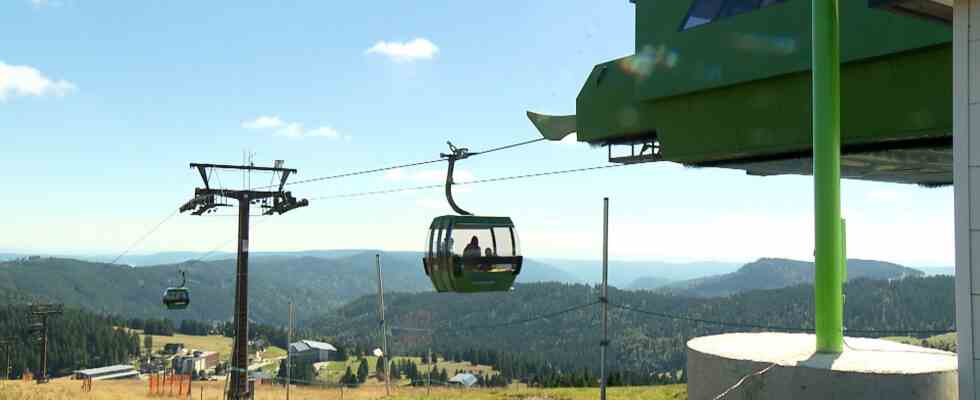Status: 03.10.2022 07:18 a.m
Cable cars that run more slowly, less snowmaking – and higher ticket prices: the ski areas in Germany are preparing for a hard winter. This means restrictions for skiers.
The gondolas are still hovering over green meadows on the Feldberg in the Black Forest. But the lift operators are already thinking about the coming winter season – a little with horror, given the exploding energy prices. At 1493 meters, the Feldberg is not only the highest mountain in the Black Forest, it is also home to the largest ski area in Baden-Württemberg. And that should also attract skiers this winter, but the lift operators want to act with caution.
“When there is a lot going on at the weekends, when the weather is nice, we have to open the lifts so that everyone can be served,” says Julian Probst, Managing Director of Feldbergbahnen GmbH. “But the other way around, when there’s not much going on, we naturally want to save energy and then leave these lifts where they are.”
Only six plants
14 lifts and cable cars normally bring winter sports enthusiasts to the ski area. The rising prices for electricity and gas are now giving rise to new considerations. “You can also cover the entire piste area without restrictions with just six of the systems,” says Johannes Albrecht, Mayor of the municipality of Feldberg and chairperson of the lift association Feldbergbahnen.
However, one would like to move the reduced offer to the low season if possible, while the offer should remain larger in the high season. The winter season in the German ski areas usually starts at the beginning of December and that is important, also for the Feldberg region. “The winter season,” explains Albrecht further, “depends on the direct, year-round and permanent jobs in tourism and services.”
Everything to the test
The Association of German Cable Cars and Drag Lifts (VDS) is also preparing for the winter season. “Basically, all areas of cable car operations will be put to the test this year,” says VDS Vice President Peter Lorenz. Think, for example, of reducing the driving speed, switching off the seat heating, but also restricting the lighting and interior temperatures. Despite all efforts to save energy, there will be no getting around price increases for tickets. The lift prices will not be fixed until the end of October, but a price increase of “about ten to twelve percent can already be assumed,” says Lorenz.
At the Spitzingsee Alpine Railways in the Bavarian Alps, energy costs are expected to increase by a factor of three to six. What that means in concrete terms for the ticket prices is also left open here, as the tariffs only want to be published in the course of autumn. However, winter sports enthusiasts can assume that lift prices will also increase in the traditional and popular ski area just outside of Munich. And: “We will not do without snowmaking,” explains Antonia Asenstorfer from Alpenbahnen Spitzingsee, “to ensure a secure ski season. However, we control our snowmaking systems as energy-efficiently as possible and especially at night, when there is no lack of energy.”
BUND against snow cannons
The BUND nature conservation in Bavaria does not generally consider the use of snow cannons to be sensible, but especially in today’s times of the energy crisis. “The ski areas would have to adapt anyway due to climate change,” demands Bavaria’s BUND chairman Richard Mergner. “Doing without snowmaking could save twelve million kilowatt hours of electricity in one winter, as well as millions of liters of water.”
In the Sudelfeld ski area, 80 kilometers south of Munich, you don’t want to operate the 31 kilometers of extensive slopes without artificial snow. “But you wait until it’s really cold,” says Egid Stadler, Managing Director of Bergbahnen Sudelfeld. Because the colder the weather, the less energy is needed to produce snow.

